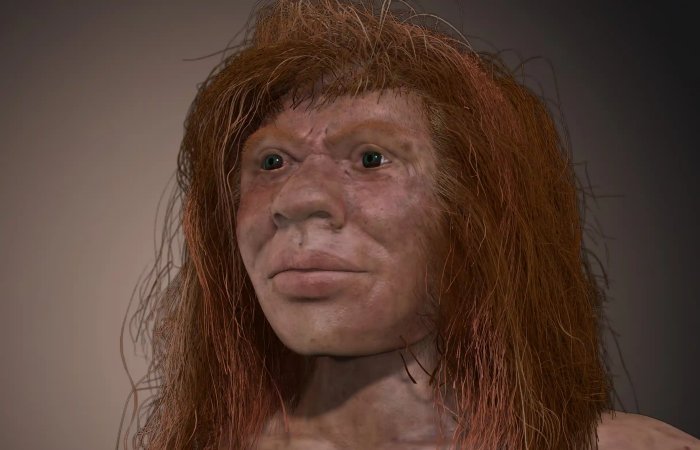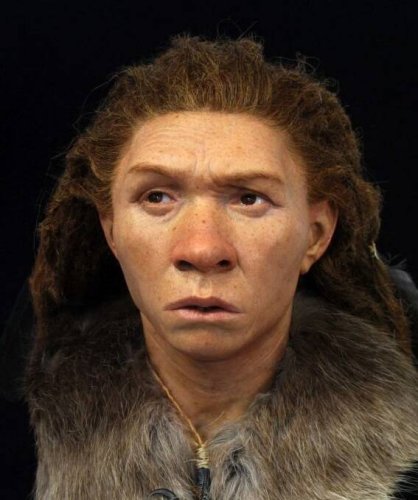Mysterious Denny – 90,000-Year-Old Child Whose Parents Were Two Different Human Species
Jan Bartek - AncientPages.com - About 90,000 years ago, an interesting child walked the Earth. This individual was a young human hybrid. Nicknamed Denny by scientists, the ancient girl is the only known individual whose parents were from two different human species!
The bones of the Denny were discovered in 2018 when scientists investigated the Denisova Cave in the Altai mountains of southern Siberia.
Artist’s reconstruction of the teenage Denisovan. Credit: John Bavaro/early-man.com
Scientists did not have many of her remains, only a bone and teeth, but they were able to determine who she was.
FINDER, Fossil Fingerprinting and Identification of New Denisovan Remains is a recent project that has been deliberately started to shed light on the Denisovans and their relations with Homo sapiens and the Neanderthals. Scientists know all three species interbred, but the goal of the study s to understand more about the complex bonding between the species.
"We aim to find out where they lived, when they came into contact with modern humans – and why they went extinct," project leader Katerina Douka, of the Max Planck Institute in Jena, Germany and a visitor at Oxford University said.
Researching the story of the Denisovans is challenging because the only place where we have found their remains is the Denisovan Cave in Siberia, and only a handful of fossils have ever been dug up there, along with several Neanderthal pieces.
"It is a wonderful site," says Tom Higham, deputy director of Oxford University's Radiocarbon Accelerator Unit and an adviser to Finder. "It is cool inside, so DNA in bones does not disintegrate too badly. However, nearly all the bones there have been chewed up by hyenas and other carnivores." As a result, Denisova's cave floor is littered with tiny, unidentifiable bone fragments.
"You cannot tell whether a piece comes from a mammoth or a sheep – or a man or woman," adds Higham. "Only a very few will be human, though they are certainly worth finding – they could tell us so much."
Scientists performed DNA sequencing on the ancient girl's bones and discovered she had parents from two different species. Denny's mother was a Neanderthal, and her father was a Denisovan. Denny lived in the cave with several individuals, both the Neanderthals and the Denisovans, and she was only a young teenager at the time of her death.
"Neanderthals and Denisovans are extinct groups of hominins that separated from each other more than 390,000 years ago.
Denisova Cave. Credit: Wikipedia - CC BY-SA 4.0
The genome of 'Denisova 11', a bone fragment from Denisova Cave (Russia) 3 comes "from an individual who had a Neanderthal mother and a Denisovan father. The father, whose genome bears traces of Neanderthal ancestry, came from a population related to a later Denisovan found in the cave. The mother came from a population more closely related to Neanderthals who lived later in Europe than to an earlier Neanderthal found in Denisova Cave, suggesting that migrations of Neanderthals between eastern and western Eurasia occurred sometime after 120,000 years ago.
The finding of a first-generation Neanderthal–Denisovan offspring among the small number of archaic specimens sequenced to date suggests that mixing between Late Pleistocene hominin groups was common when they met," the scientists write in their study published in Nature. 1
Some may think Denny's remarkable ancestry suggests that Neanderthals and Denisovans must have mated with each other regularly, but scientists warn against jumping to conclusions.
"The DNA of Neanderthals and Denisovans are distinct. We can easily tell them apart. That argues against frequent interbreeding. Otherwise they would have ended up with the same DNA," Douka says.
Previous studies have offered evidence Denisovans, and modern humans interbred, but why at Denisova?
"One suggestion is that the cave represents a border outpost for both species, one that was situated at the very eastern edge of the range of the Neanderthals, who were primarily a European species, and at the very western tip of the homelands of the Denisovans, who were an eastern species. Occasionally members from both groups would have reached the cave at the same time – with amorous consequences.
It is an idea borne out by detailed studies of Denny's Neanderthal mother. Her genes show a particularly close affinity with Neanderthals who lived in Croatia, suggesting that the immediate predecessors of Denny's mother may have been part of a group who slowly migrated east from Europe towards Denisova – where she encountered Denny's father at the outer edges of each other's homelands.
A modern reconstruction of a Neanderthal woman. Credit: Royal Pavilion & Museums; Brighton & Hove
It is an intriguing picture, though much more information is required to confirm it. Scientists have no direct evidence that the Denisovans' homeland range was primarily to the east of the cave, although the fact that their genes have been detected in the DNA of populations in Australia, New Guinea and other parts of Oceania, provides support for this idea and suggests future searches for sites should be focused on eastern Russia, China and south-east Asia." 2
The Denisovans are an extinct human species that scientists possess little information about. Only recently were experts able to construct the first facial reconstruction that reveals what Denisovans may have looked like.
According to Higham, there are many unanswered questions scientists are facing. For example, what was the Denisovans' distribution? What is the earliest evidence for their emergence from the common ancestor they shared with Neanderthals 500,000 years ago?
Scientists would benefit if they could find a bone or two from other sites, but it may take a while before it happens.
Updated on December 14, 2023
Written by Jan Bartek - AncientPages.com Staff Writer
Copyright © AncientPages.com All rights reserved. This material may not be published, broadcast, rewritten or redistributed in whole or part without the express written permission of AncientPages.com
Expand for references- V Slon et al., The genome of the offspring of a Neanderthal mother and a Denisovan father, Nature, 561(7721), pp.113–116, Sep 2018. doi: https://doi.org/10.1038/s41586-018-0455-x.
- Robin McKie - Meet Denny, the ancient mixed-heritage mystery girl, The Guardian
More From Ancient Pages
-
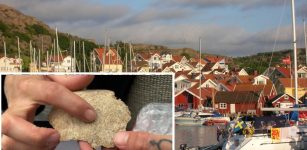 Man In Sweden Finds Viking Age Skeleton In His Garden
Archaeology | Jun 30, 2023
Man In Sweden Finds Viking Age Skeleton In His Garden
Archaeology | Jun 30, 2023 -
 The Carthaginians’ Secret: Mysterious Desert Land Or America Found By Mistake?
Featured Stories | Jul 27, 2017
The Carthaginians’ Secret: Mysterious Desert Land Or America Found By Mistake?
Featured Stories | Jul 27, 2017 -
 Vikramashila: India’s Main Intellectual And Learning Center Of Tantric Buddhism
News | Sep 19, 2015
Vikramashila: India’s Main Intellectual And Learning Center Of Tantric Buddhism
News | Sep 19, 2015 -
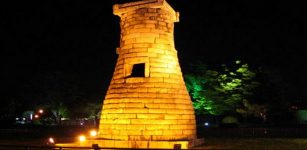 Cheomseongdae “Star-Gazing Tower” Is The Oldest Observatory In East Asia
Featured Stories | Mar 31, 2021
Cheomseongdae “Star-Gazing Tower” Is The Oldest Observatory In East Asia
Featured Stories | Mar 31, 2021 -
 First Insight Into 3,500-Year-Old Cuisine Of The Enigmatic Nok Culture
Archaeology | Jan 17, 2022
First Insight Into 3,500-Year-Old Cuisine Of The Enigmatic Nok Culture
Archaeology | Jan 17, 2022 -
 Neanderthals Cared For Each Other And Survived Into Old Age – Study Shows
Evolution | Nov 2, 2023
Neanderthals Cared For Each Other And Survived Into Old Age – Study Shows
Evolution | Nov 2, 2023 -
 Magnificent St. Paul’s Catacombs – Largest Underground Roman Cemetery In Malta
Featured Stories | Aug 28, 2019
Magnificent St. Paul’s Catacombs – Largest Underground Roman Cemetery In Malta
Featured Stories | Aug 28, 2019 -
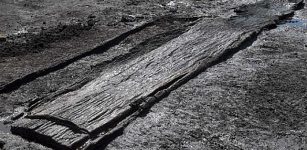 Bronze Age ‘Washingborough Boat’ Will Reveal Boat Building Techniques Of Ancient People
Archaeology | May 11, 2017
Bronze Age ‘Washingborough Boat’ Will Reveal Boat Building Techniques Of Ancient People
Archaeology | May 11, 2017 -
 Why Is This Centaur Head A Scientific Mystery?
Archaeology | Jan 19, 2024
Why Is This Centaur Head A Scientific Mystery?
Archaeology | Jan 19, 2024 -
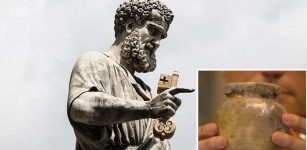 Are Bones Of Apostle Peter Hidden Inside A 1000-Year-Old Roman Church?
Archaeology | Sep 16, 2017
Are Bones Of Apostle Peter Hidden Inside A 1000-Year-Old Roman Church?
Archaeology | Sep 16, 2017 -
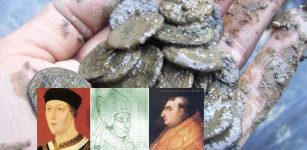 15th Century Cooking Pot With 500 Silver And Gold Coins Unearthed In Vianen, Netherlands
Archaeology | Mar 6, 2018
15th Century Cooking Pot With 500 Silver And Gold Coins Unearthed In Vianen, Netherlands
Archaeology | Mar 6, 2018 -
 Gungnir: Odin’s Magical Weapon That Provoked Or Reduced Conflicts In Norse Mythology
Featured Stories | May 12, 2020
Gungnir: Odin’s Magical Weapon That Provoked Or Reduced Conflicts In Norse Mythology
Featured Stories | May 12, 2020 -
 Oxygen Spike Coincided With Ancient Global Extinction
Archaeology | Sep 3, 2021
Oxygen Spike Coincided With Ancient Global Extinction
Archaeology | Sep 3, 2021 -
 Binary Code Was Used In Ancient India And Polynesia Long Before Leibnitz Invented It
Ancient Technology | Sep 28, 2017
Binary Code Was Used In Ancient India And Polynesia Long Before Leibnitz Invented It
Ancient Technology | Sep 28, 2017 -
 6,000-Year-Old Bizarre, Mouthless ‘Alien’ Mask Unearthed In “The Salt Pit” Settlement In Northeast Bulgaria
Archaeology | Nov 20, 2020
6,000-Year-Old Bizarre, Mouthless ‘Alien’ Mask Unearthed In “The Salt Pit” Settlement In Northeast Bulgaria
Archaeology | Nov 20, 2020 -
 Ancient Greeks Had Great Understanding Of Weather And Climate
Civilizations | Sep 7, 2015
Ancient Greeks Had Great Understanding Of Weather And Climate
Civilizations | Sep 7, 2015 -
 How Did These Five Common Words Enter The English Language?
Linguistic Discoveries | Oct 28, 2024
How Did These Five Common Words Enter The English Language?
Linguistic Discoveries | Oct 28, 2024 -
 Grutte Pier – Legendary Giant Frisian Freedom Fighter Who Sought Revenge
Featured Stories | Dec 20, 2018
Grutte Pier – Legendary Giant Frisian Freedom Fighter Who Sought Revenge
Featured Stories | Dec 20, 2018 -
 On This Day In History: Battle Of Visby, Gotland Was Fought – On July 27, 1361
News | Jul 27, 2016
On This Day In History: Battle Of Visby, Gotland Was Fought – On July 27, 1361
News | Jul 27, 2016 -
 1,500-Year-Old Ancient Lamps Unearthed In Zerzevan Castle In Southeast Turkey
Archaeology | Nov 25, 2019
1,500-Year-Old Ancient Lamps Unearthed In Zerzevan Castle In Southeast Turkey
Archaeology | Nov 25, 2019

